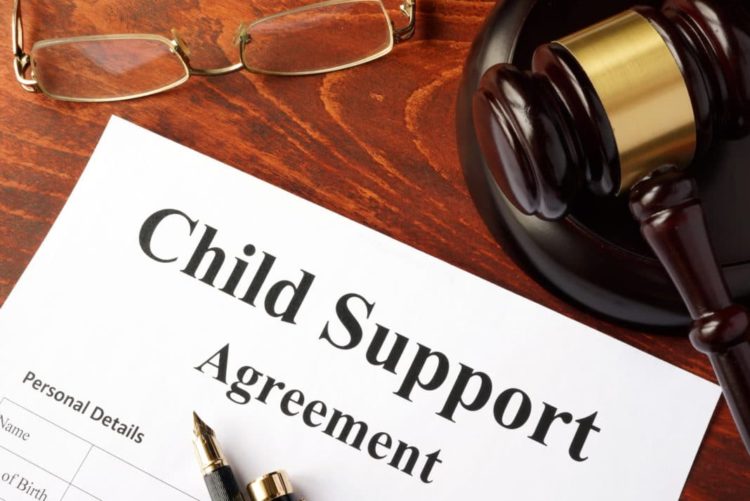Divorce is not easy by any means for all parties involved, especially not children. Unfortunately, as divorce tends to go, it often involves the complicated process of filing for child custody. The main thing to keep in mind is that the length of the process depends on how cooperative you and the other parent are.
Filing for child custody can take anywhere between 3 months to a year. If, however, the other parent does not cooperate, it can take at least 5 or more years to resolve the case. To help prepare you for the road ahead, we’ve gathered all the necessary information that will help you understand what to expect.
So keep on reading to learn about the steps involved in filing for child custody.

source:moneycrashers.com
Page Contents
Appoint Legal Representation
Before you go about starting the process of filing for child custody, it is best to get legal advice and representation. According to btlfamilylaw.com, child support cases are very difficult for both parents and they involve many variable factors and considerations that you need to be aware of. So, it is best to have an experienced attorney with you during the process to determine the level of legal support you need at each stage.
File for the Case
For any legal request to be looked over, you must begin by filling out the relevant forms specified to you by the court to file the case for your child custody request. There are many documents involved and, depending on which state you live in, they will probably include the following:

source:expertise.com
- Family Court cover sheet/Sensitive Datasheet – includes all your confidential and personal information such as social security numbers, addresses, and birthdates. This information is confidential and will be kept secure by the court.
- Notice of Appearance – If an attorney will be representing you, this needs to be filed with the court at the early stage of the process.
- Summons to Respond or Appear
- Petition for Child Custody Application
Most of the above documents have an associated processing and filing fee that will vary depending on your country and state.
Serve the Other Party

source:moneycrashers.com
After you have filed for custody and submitted the required documents, you will need the other party to be served with the notice. The most common way is to serve the other parent via certified mail. However, you need to use restricted delivery so that the courier can ensure that the addressed person signs in person for the delivery.
If someone else signs the serving papers, the process will be invalid and will not be submitted to the court. If the other parent refuses to sign for the certified mail or is not found in person then you might need to hire a professional process server. These individuals serve the other parent on your behalf and they take the time to locate and serve them.
Enroll in Parenting Class

source:atlantadivorcelawgroup.com
In most states, once the other parent has been served, you are legally required to enroll in a parenting class. This is not a judgment of your parenting skills; it is merely a part of the proceedings to file for custody. You must enroll and get certified within 45 days of the other parent being served to keep the process valid.
File a Consent Decree

source:expertise.com
If you and the other parent are in agreement on the terms of the child custody case and related issues all the way up to and after the petition filing, then you are in luck. If that is the case, all you have to do is wait for a minimum of 60 days after the submission then submit a form of Consent Decree signed by both of you. This is then sent to court and you will have to wait for it to be signed by a judge, which can take from a few weeks to a maximum of 3 months.
Wait For a Response

source:pxfuel.com
On the other hand, if you and the other parent are not in agreement, then the process will be a little different. If the parent has been served in the same state as the proceedings by mail or by a process server, they have up to 20-25 days to respond. If they were served out of state, then the duration is 30-35 days. The timeframe for them to respond is counted on the day after they have been served.
There are two options after the other party has been served:
File for a Default Judgment
If the other parent does not respond, then the court can start a default proceeding against them for failing to show up or file a response. They will then get an additional 10 days to respond without receiving a penalty. If there is still no response on their end, then you are eligible to apply for a default judgment.
This means that a judge can make a decision on your case without waiting for the other parent’s response. This option will only be viable after 90 days from the date of filing the petition, only then will a judge agree to sign off on a default decree.
Go to Court

source:pxfuel.com
If the other parent does respond, then the court clerk will refer the case to the assigned judge in order to set up a preliminary hearing— officially called a Resolution Management Conference. At this appointment, the judge will want to hear each parent’s side of the story to be able to determine a ruling.
This will also include the parents explaining the agreements that they have reached between them. The judge will issue a ruling if the parents mutually agree. If they don’t, then both parents will be referred to Conciliation Court for mediation to discuss all the terms and points of conflict that need to be addressed.
Filing for child custody can be a tedious and somber ordeal. However, if you reach an agreement with the other parent, this process can take only 3 months. If not, then the process will most likely take much longer and will even have to go to trial if a judge is not able to mediate some resolution or agreement between you and the parent. Take your time to research all the necessary documents and steps, consult with an attorney before starting the processes, and make sure you follow all the regulations so you don’t inadvertently invalidate your filing.





